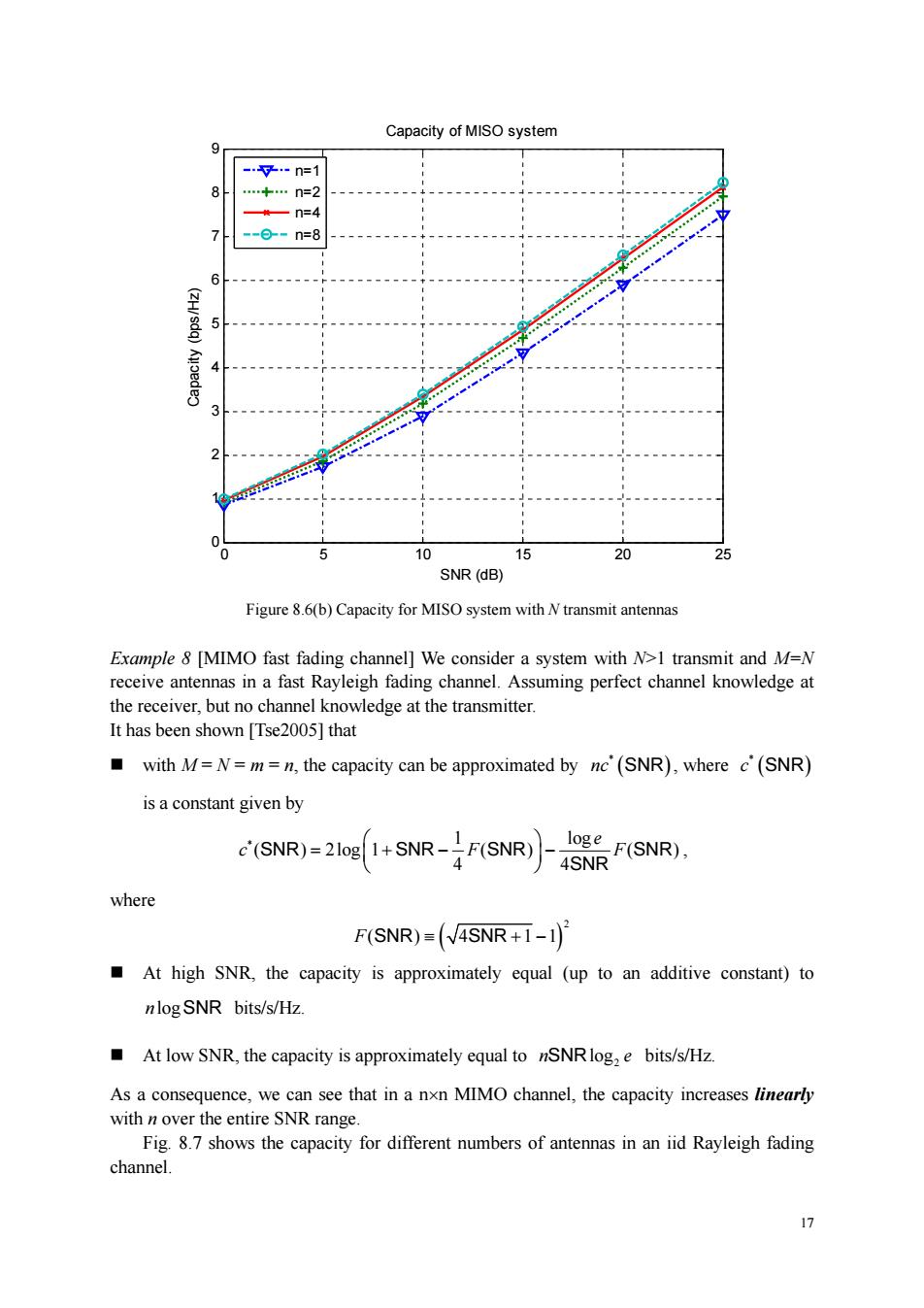正在加载图片...

Capacity of MISO system +n=2 -n=4 =-=n=8 } 5 10 15 20 SNR(dB) Figure 8.6(b)Capacity for MISO system with N transmit antennas Example 8 [MIMO fast fading channel]We consider a system with N>1 transmit and M=N nnel.Ass uming perfect channel knowledge at It has been shown [Tse2005]that with M=N=m=n,the capacity can be approximated by nc'(SNR),where c(SNR) is a constant given by c'(SNR)-2log1+SNR-F(SNR) 4SNR F(SNR), where F(SNR)=(W4SNR+I-I月 At high SNR.the capacity is approximately equal (up to an additive constant)to nlogSNR bits/s/Hz. At low SNR,the capacity is approximately equal to nSNR log,e bits/s/Hz. As a consequence,we can see that in a nxn MIMO channel,the capacity increases linearly with n over the entire SNR range Fig.8.7 shows the capacity for different numbers of antennas in an iid Rayleigh fading channel. 17 0 5 10 15 20 25 0 1 2 3 4 5 6 7 8 9 Capacity of MISO system SNR (dB) Capacity (bps/Hz) n=1 n=2 n=4 n=8 Figure 8.6(b) Capacity for MISO system with N transmit antennas Example 8 [MIMO fast fading channel] We consider a system with N>1 transmit and M=N receive antennas in a fast Rayleigh fading channel. Assuming perfect channel knowledge at the receiver, but no channel knowledge at the transmitter. It has been shown [Tse2005] that with M = N = m = n, the capacity can be approximated by * nc SNR , where * c SNR is a constant given by * 1 log ( ) 2log 1 ( ) ( ) 4 4 e c FF SNR SNR SNR SNR SNR , where 2 F( ) 4 11 SNR SNR At high SNR, the capacity is approximately equal (up to an additive constant) to nlogSNR bits/s/Hz. At low SNR, the capacity is approximately equal to 2 n e SNRlog bits/s/Hz. As a consequence, we can see that in a nn MIMO channel, the capacity increases linearly with n over the entire SNR range. Fig. 8.7 shows the capacity for different numbers of antennas in an iid Rayleigh fading channel